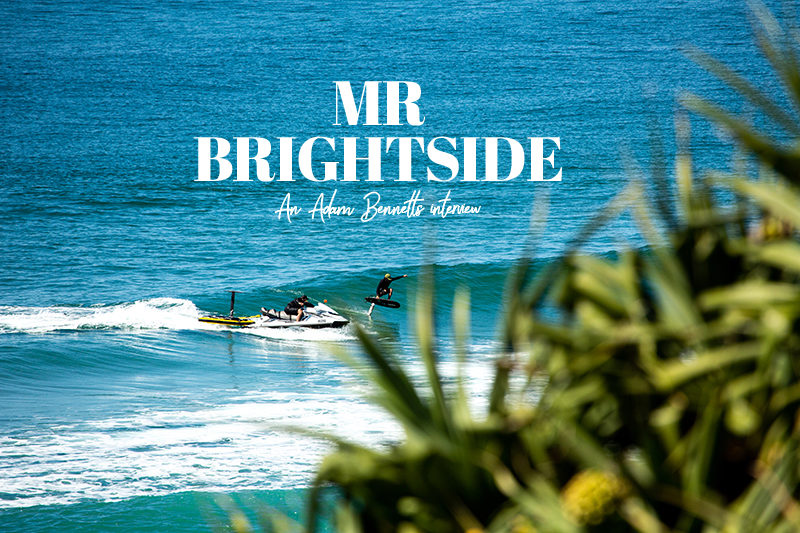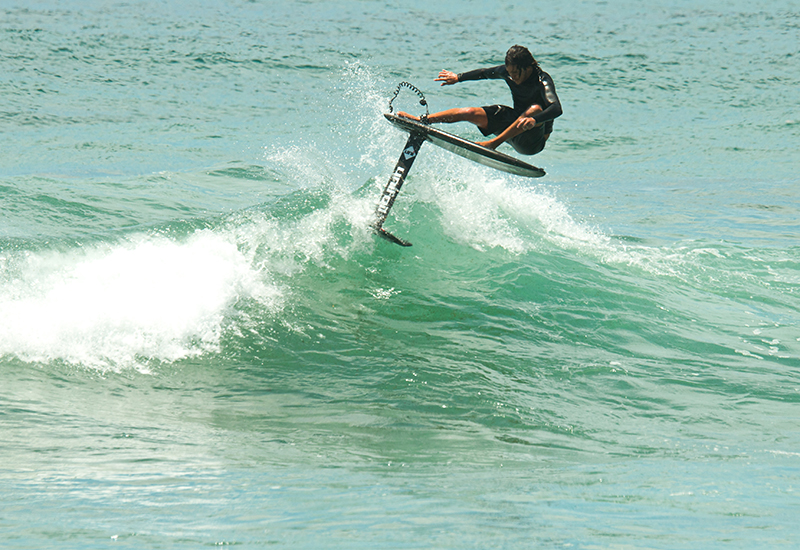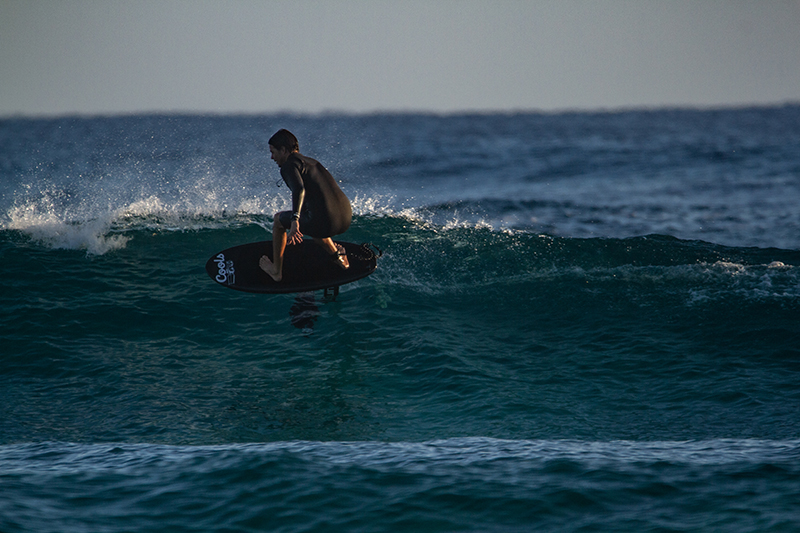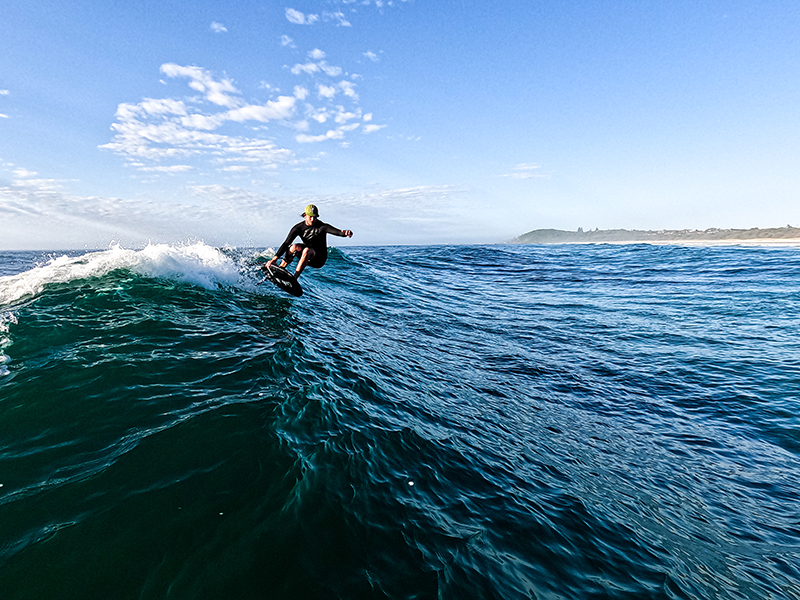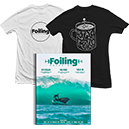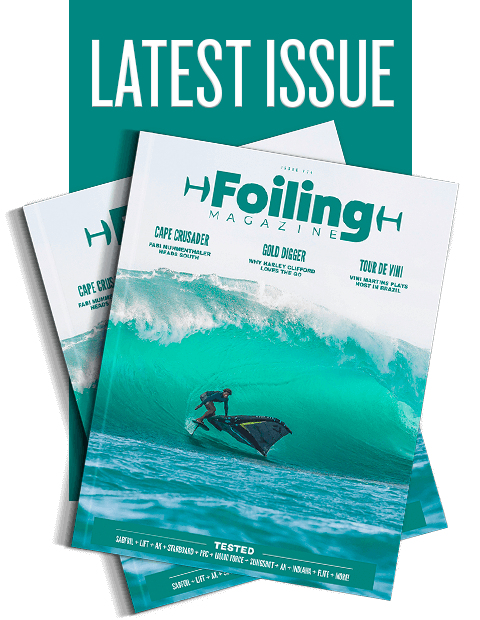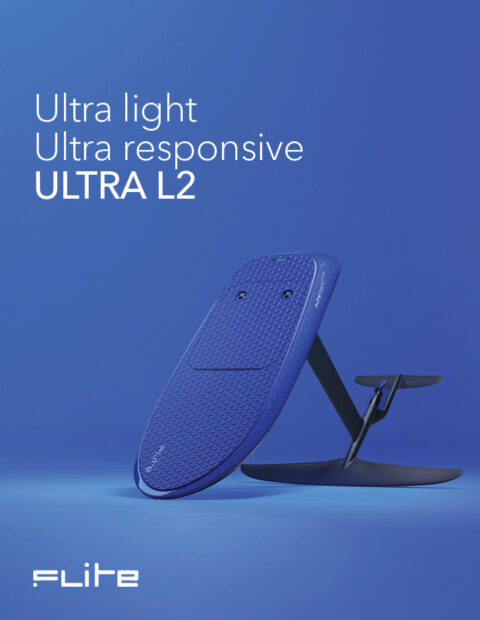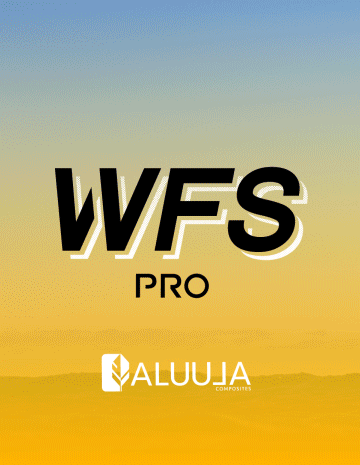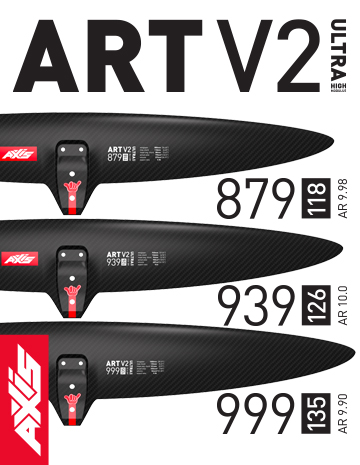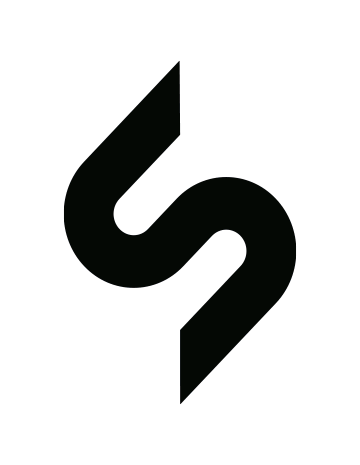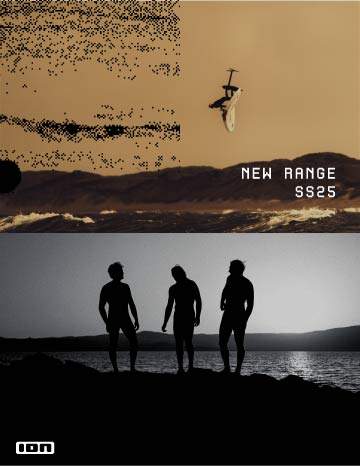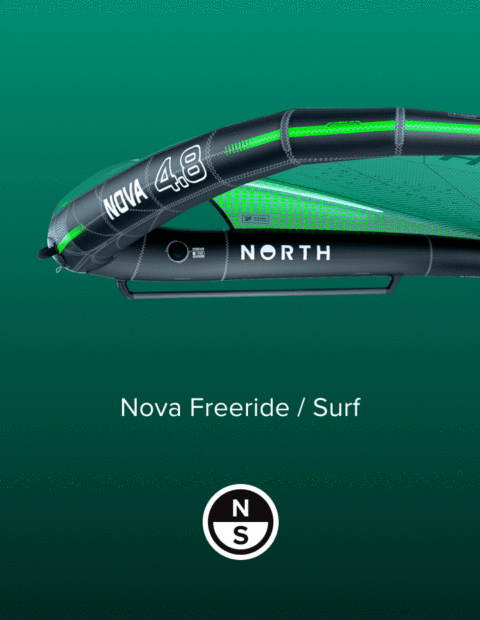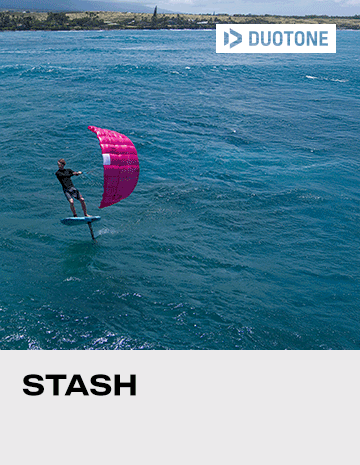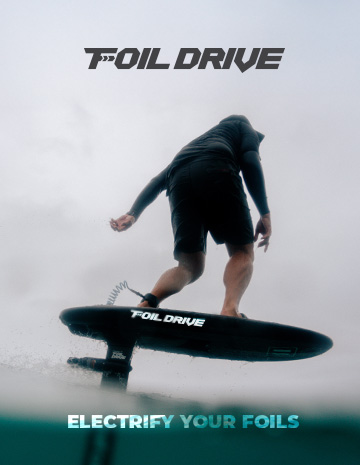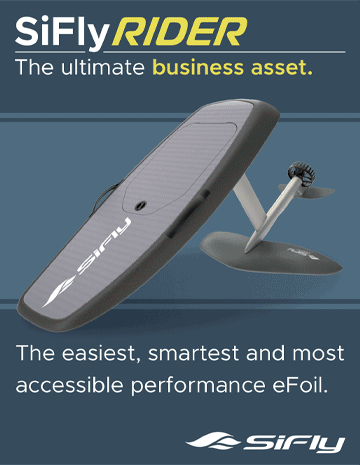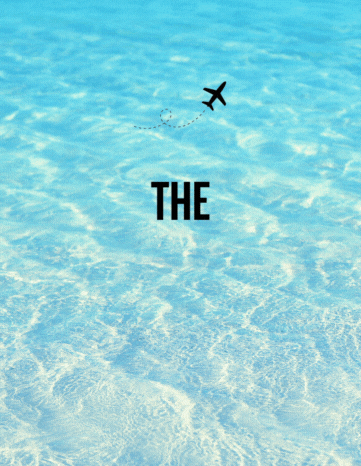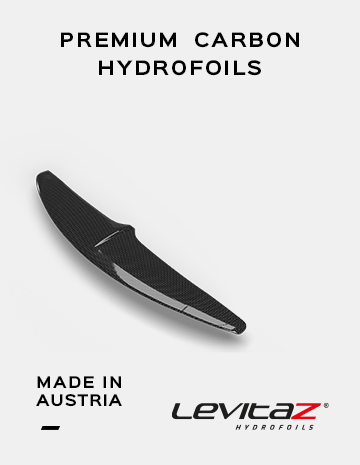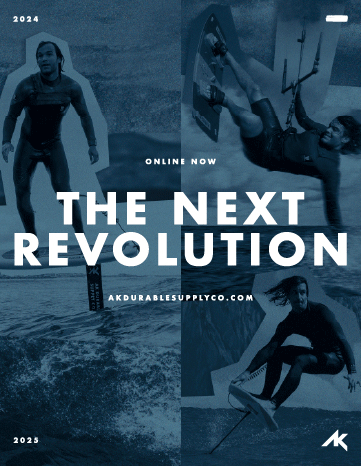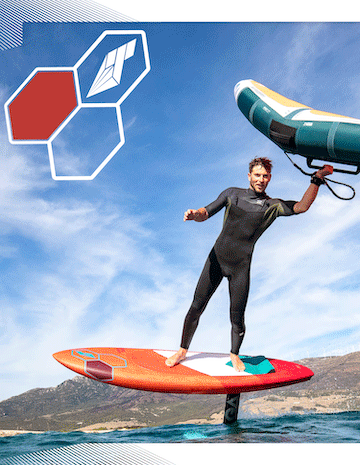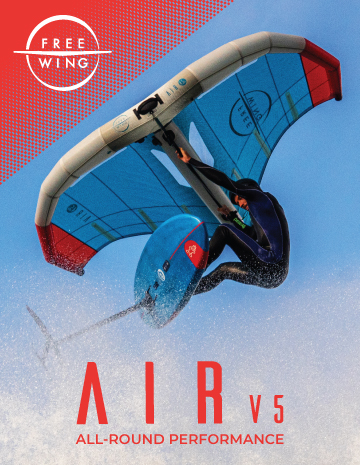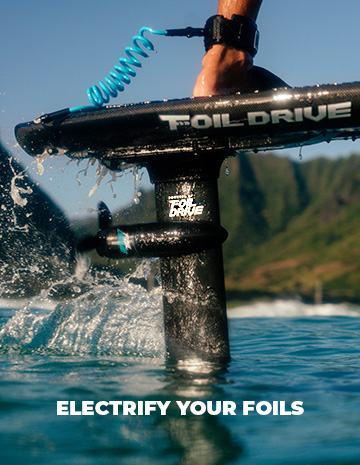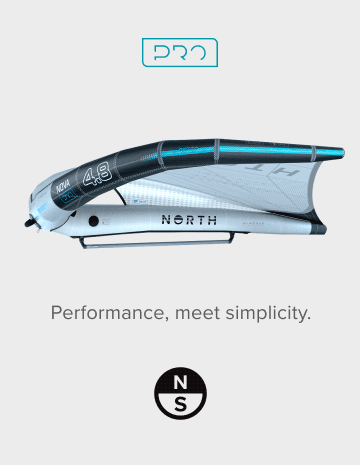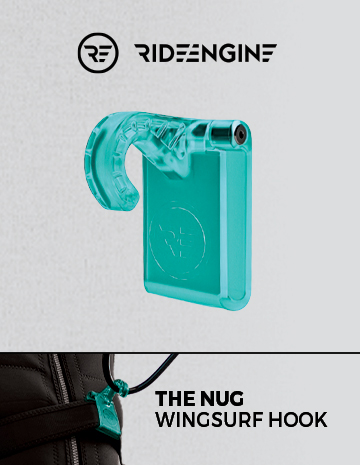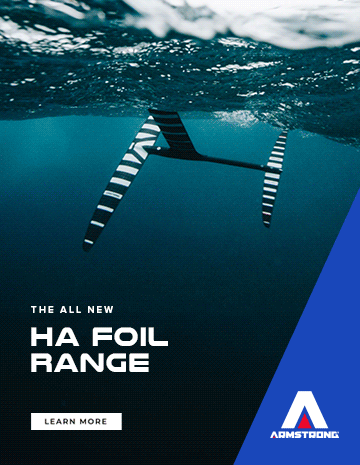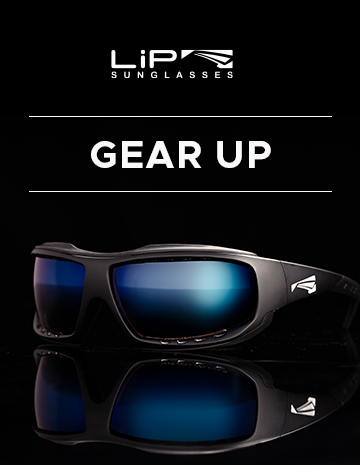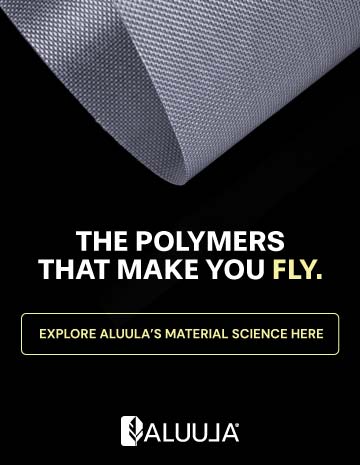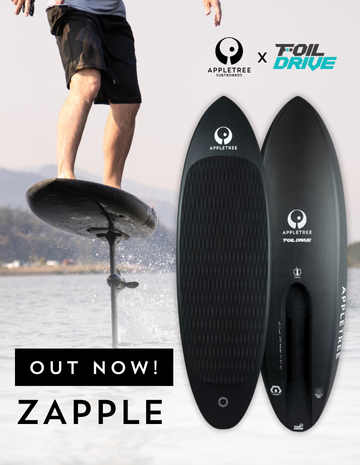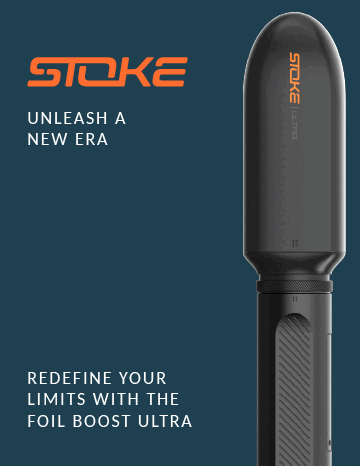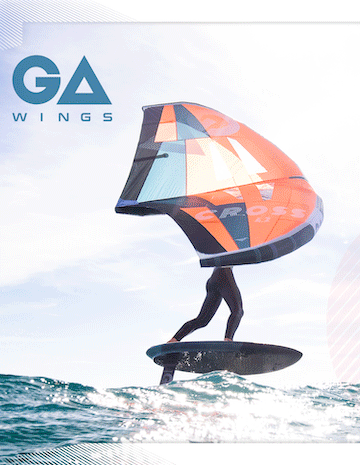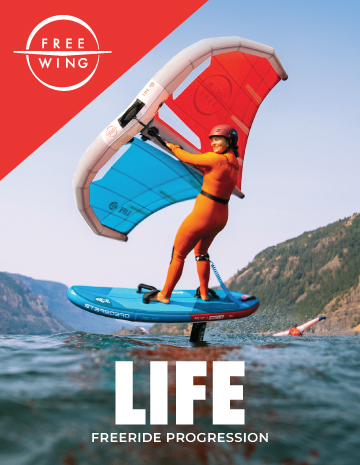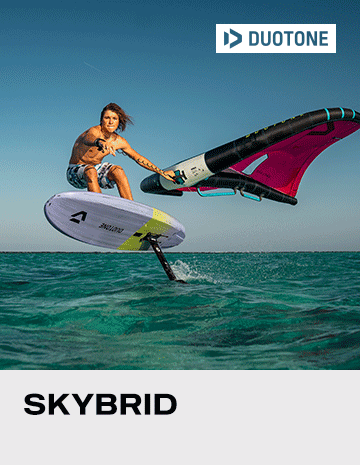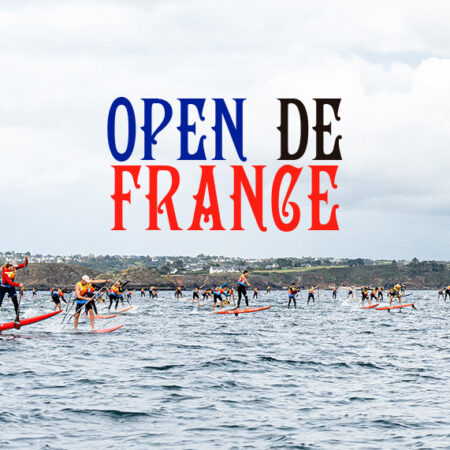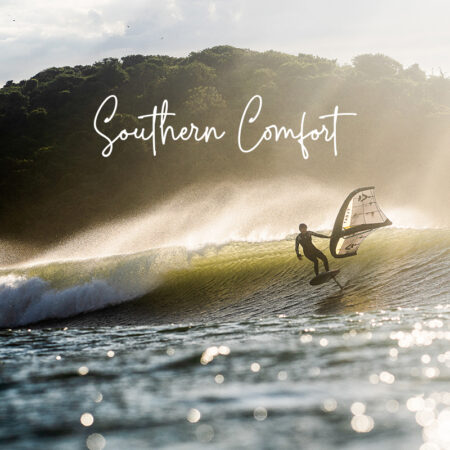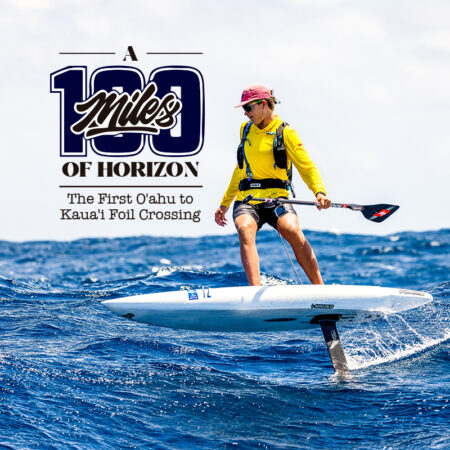Round the back, break the window… ha!
I went, “Yeah, sick!” It was a Vortex 175. It was so good. I was frothing on it to Clifford and Clifford says, “I've just made this new prototype, can I send one to you?”
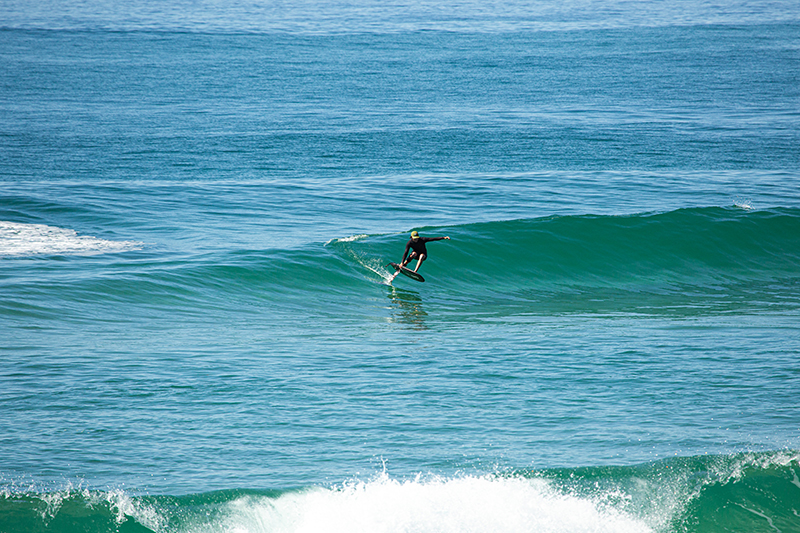
And you went, “Oh gee! Can you?”
It was a Vortex 150 prototype which is now one of their best-selling foils. He sent it to me and I got on it, and I was like, “Holy shit!”. The 175 was awesome, but yeah getting on the 150… it was smaller, faster, turned better but still pumped pretty much the same, so I was in heaven riding this wing. From then on, I was hooked. I switched to Uni as they offered me a deal, and they had a broad range of foils and a lot of the high aspect movement was inspired by Clifford's Hyper design. I got onto the Hypers and it opened up a whole new can of worms. You could surf these wings, but you can also just pump around for 10 minutes. Basically, that's where I got to where I am now at UniFoil. I've just been working really closely alongside Clifford, Matt and Toby at UniFoil, developing new prototypes.
So, tell us about how the Vyper came about.
We did probably three versions of each size and the goal was to make something in between the whole pump and turn. We were looking for that and Clifford did a few drawings, and he was telling me what each would do. Clifford is the expert, but I've learnt a lot about foil sections through my journey… I know what feels good and how to push stuff, and I can push it to its limits. After a few protypes, going through different sizes of the different models we were able to finalize the designs.
I think you’re downplaying it a bit. You were saying you’re not the guru of foil design, but obviously what you brought to the table is that you've got a good ability to communicate. You can have a pro surfer that says “it doesn’t go” but that doesn't cut it. You’re able to say, “this is where it’s going well, this is where it isn’t. What can we do to change that?” And together you guys have come up with something that you feel is brilliant right?
Yeah. Because I've learnt so much about what foils actually do, like what they do underwater while we're riding them. It’s been really cool to talk about it, knowing what certain things do and what they feel like and then what you need to change to get to where you want to be.
Even in the very late stages of the prototypes, I had Cliff put an extra degree of angle of attack in the front wings, just to give more pressure on your front foot, without having to use a base plate shim, because I was fine-tuning everything so much, shimming base plates, shimming tails, just doing all kinds of shimming to fine tune it so precisely. It was cool to put that extra angle of attack in the front wing and then getting the next prototype and going, “wow!”. I fine tune my stuff so much, and I spend so much time tweaking stuff to get it exactly how I want it, but you know your average person probably doesn't do that.
So, you've told us about the wings which are obviously important, but I saw recently that you're on some boards that definitely have a different plan shape to them. Tell us a bit about those.
I bought a second-hand JS off Paul Stacey who's designing all the foil boards and it was an old 25 litre 4’6”, pretty primitive. I bought that because I didn't know how I was going to like it. Then since I started progressing through the sport, JS started giving me a board here and there and said they’d make me protos. They were working with my brother and with Parko, developing new foil boards, prototypes, just before they release them. They started sending me one of each proto. From six months in, I’ve been really involved in developing these boards and I'm giving heaps of feedback, like I was doing with the Vyper.
What I've found through my progression in the sport is that I really like a thin board. For a while everything went real boat hull shaped and I never liked that because I found it was very unresponsive, having a lot of foam between your foot and the mast. I found that having a thin board that has as much of a surfboard bottom as possible was really helpful in the wash. For me, all I wanted to do was surf a foil like a surfboard. Once you get good enough and you start turning, all you want to do is draw simple lines… the same sort of lines as if I was surfing and doing roundhouse cutbacks, hitting the foam, trying to do carves in the pocket, and stuff like that. Then when you touch down and you're going back to shore, the foil should lift you out of the water again and you're away. I learnt a lot through the videos I made with Aaron Smith from Earth Kitesurfing.
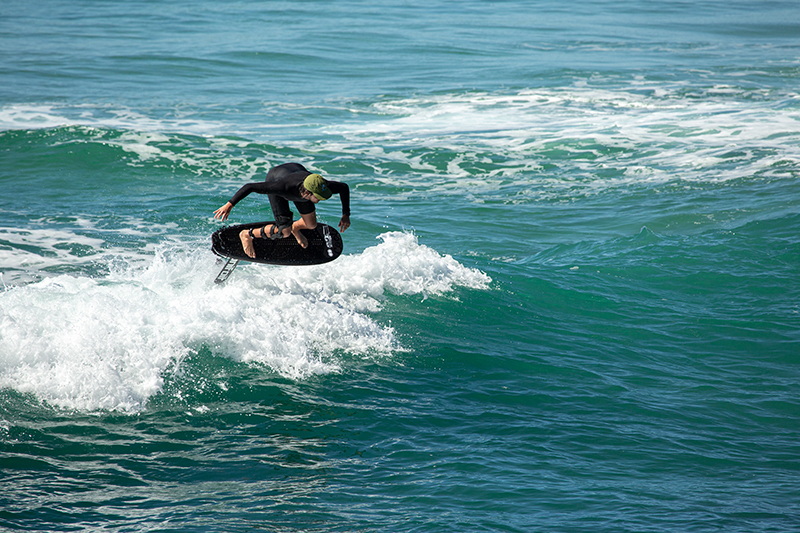
He is a great driver and videographer by the way.
He’s the best driver and filmer in the business. In my videos I would notice that when I'm really leaning into a really deep carve, it was always the back third of my board that would be touching the water. I worked out through making a couple of prototypes that you don’t need all the area at the tail of the board.
Just take it off.
Haha, yeah. You might think you need it for volume or whatever, but what we did was basically turn the board into something almost like a teardrop…
Put the foam up front…
Yeah. So, you have your foam under your chest for paddling and also for stability when you do your foam rebounds or whatever, because you need to get stability under your front foot. Any time you come in contact with any foam or anything, you’re pretty much on your front foot because you tend to accelerate once you get in that foam and it pushes you out, so you’re kinda leaning forward anyway, just keeping the foil in the water. Then you know if you're doing your snaps or carves and you’re coming back down the face, you’re definitely leaning forward. So having a wider area under your chest and then pulling the tail area in so much has helped a lot. I’ve been talking to Kane de Wilde and when I posted that we started talking about the narrowness of the tail and he said “yeah, I just made a board, and I measured my foot and just made the tail as wide as my foot.” Just got a ruler out and measured how long his foot is and made where he stands the width of his foot. His foot just fits on his board. So yeah, he has the same sort of ideas as me.
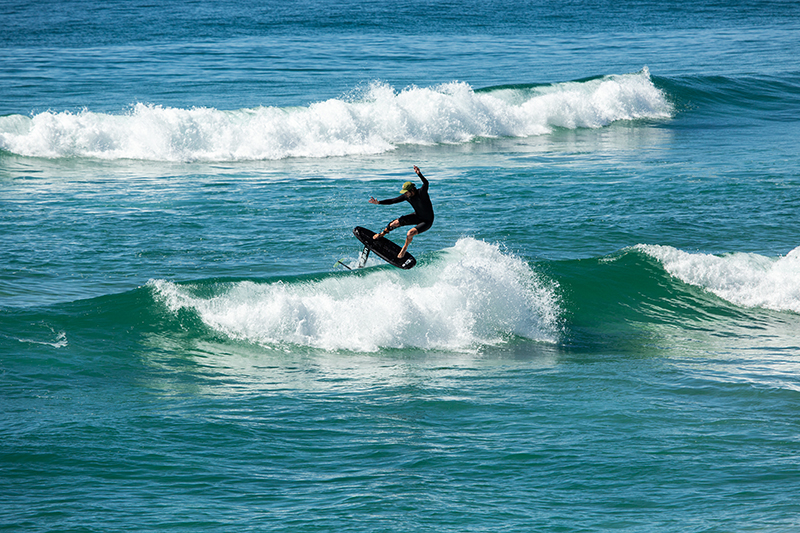
Let’s look at what you're doing with your foiling. And there's two things that I'd like to talk about in that respect. The first time your foiling came to my attention was when you were on that MFC, and unlike everybody else, including myself, who were running for the hills when it came to anything in regards to the foam, you were hitting it like a banshee. What enabled you to do that? And given it is still a goal of a lot of foilers but it's beyond their abilities, tell us how you do it.
The MFC was a real game changer for me. It was really good between turns. It was fast. It felt real surfy. I also moved down to the shorter fuselage as well. A 58cm fuselage. That definitely helped because when you shorten your turning radius you've got more time to look at the wash. When you turn sharper, you’ve got more time to assess the situation, where if you have a longer fuse or on a bigger wing that doesn't turn as good, you generally go into a turn and you don't really know where the whitewash is because you’re going through this big long arc. It’s pretty daunting. But if you can do a really sharp turn, you’ve got a lot more time and you can really gauge what the whitewash is doing. It gave me a lot more confidence to know whether or not I'm going to hit that section. Having more time to look at the wash is, I think, what gives me more confidence. A short fuse can do that for you.
Funnily enough, I don't like riding a short fuse anymore. Over my time progressing, I've experimented with a few crazy short fuses. Clifford's made me ones that are stupidly short. They’re fun and novelty, really rippy, but at any kind of speed they get squirrelly. They’re probably fine on entry-level “generation 1” foils that are generally pretty slow, but anything in this current development of pro foils are so fast that at speed they’ll become pitchy with a short fuse, and it ruins the whole experience of the ride, because she's going up and down like a pogo stick. What I've found now is that the best way to achieve a tight turning radius and have a smooth ride is to ride a longer fuse with a with a smaller tail and a shim, a big shim. So I'm riding an 11 1/2 inch tail with a 1.5 degrees shim in it, but it's still on a 63cm fuse, which is the UniFoil long fuse…
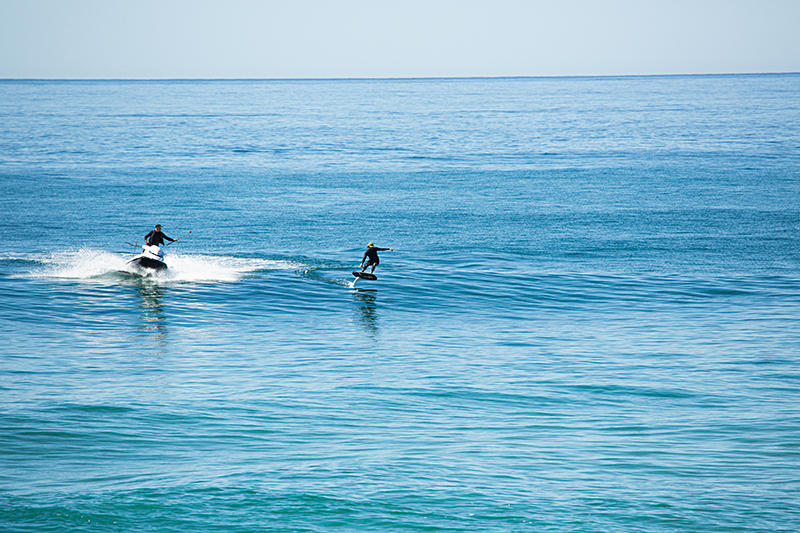
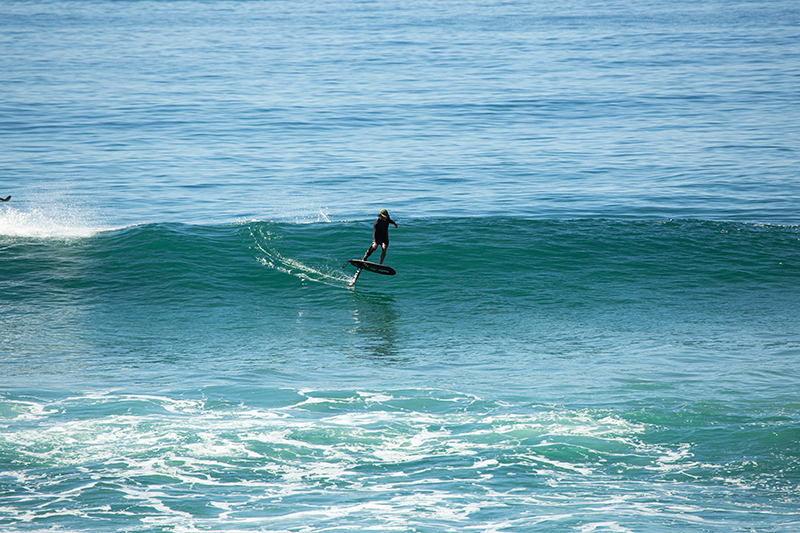
Let's talk about THE TURN.
The Turn? Oh. The Turn. Haha!
It's like when you talk about pipeline and you're talking about The Turn at Pipeline, everybody knows what you're talking about.
The Tommy Carroll turn?
Yes. The Tom Carroll snap. You have reached Tom Carroll snap status with that turn. Tell us about how that felt. Tell us what enabled you to do it. Just talk us through it.
Yeah, that was unreal that day. That was the day when I got the last proto version of the 130 Vyper that is going into production. I hadn’t actually ridden it yet, and that was the very first ride on it. I had to go somewhere and I only caught two or three waves on it, and that was one of them. It’s just one of those things. The Vyper is really stable at high speeds but turns so good. I had the perfect section, and everything came together, and the wing held so well through that turn. A lot of times, foils at a certain speed want to nosedive, but the Vyper allowed me to turn really sharply.
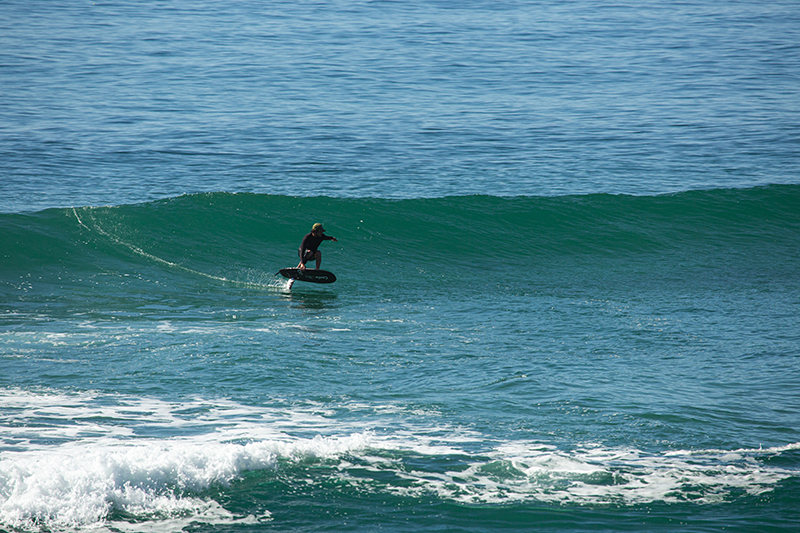
The amount of torque in that turn must have felt awesome.
Yeah, it felt unreal. Arron was in the perfect spot to capture it. He whipped me out onto it. It was this peak that I was like able to come in behind with heaps of speed. The wing allowed me to turn really sharply. It felt like one of those really nice carves off the top that you can you do shortboarding.
Thanks for your time bud, any parting wisdom for the Foiling Mag readers?
The biggest thing I can say in regards to progression in this sport is to try heaps of things and move stuff around. Shimming has definitely been a game changer for me, so get yourself some shims from whatever company you're riding. If they don't have one, make some out of credit cards. For shimming the base plate, I was using window packers like builders use. It's crazy how shimming something half a degree can change the whole feel of the whole ride, and make it feel so much better.
A lot of these companies, they've all got different backgrounds. Some are kite guys some are SUP guys… So if you're a surfer and you want to get a surf feeling, try changing their angles, because different angles can change the whole ride. They might have designed it to be a winging wing and just go fast and straight, and if you change the angle of the tail or the base or even the front wing by tuning the base plate, it can change the whole feel of it and make your experience more enjoyable for you. You know, for me, my goal is to surf foil and try and surf the wings like I would a shortboard. So that's my biggest takeaway. Muck around with your shims.
Now subscribe to the world's best foiling magazine!
To get the latest premium features, tests, gear releases and the best photojournalism in the world of foiling, get yourself a print subscription today!


